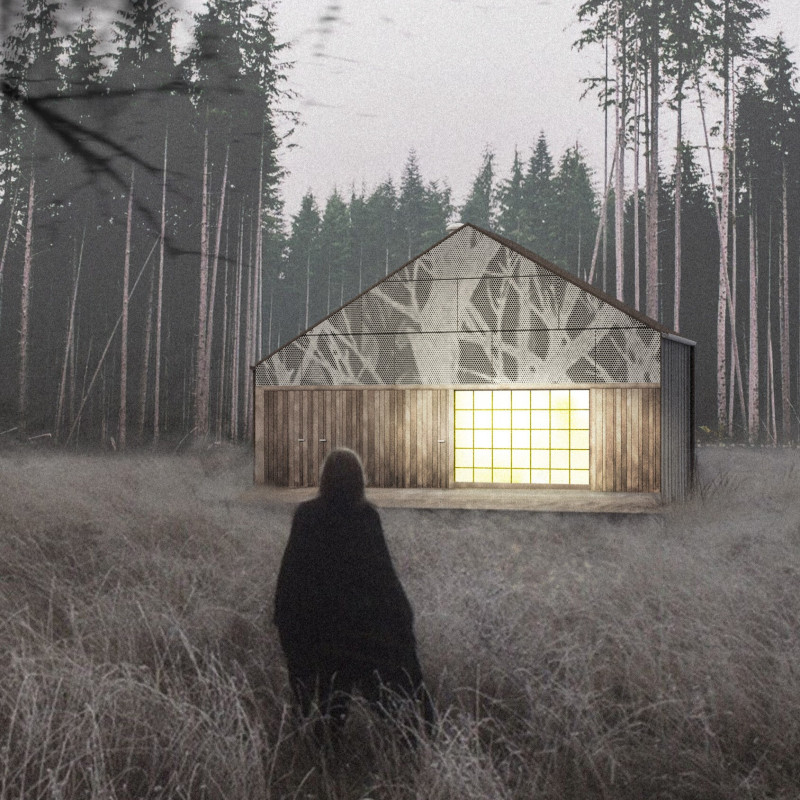5 key facts about this project
From the exterior, the building showcases a modern aesthetic characterized by clean lines and thoughtful material choices. The facade incorporates large glass panels that create transparency and connection with the landscape, allowing natural light to permeate the interior spaces. This design choice not only promotes energy efficiency but also blurs the boundaries between the indoor and outdoor environments. Within the facade, thoughtfully arranged wooden slats add warmth, contextually resonating with the natural setting while providing necessary shading from direct sunlight. Such careful attention to the details of the facade highlights the integration of climate-responsive design.
Internally, the architectural layout is characterized by open spaces that encourage flexibility and adaptability. The design incorporates communal areas that are versatile, allowing for various configurations depending on the needs of the occupants. Natural materials such as timber flooring complement the expansive spaces, contributing to a welcoming atmosphere that enhances user experience. The selection of materials is intentional, with an emphasis on durability and sustainability. This consideration is evident in features such as recycled content and low-maintenance finishes that promote longevity and functionality.
A notable aspect of this project is its emphasis on sustainability. Various systems have been integrated to reduce the building's environmental impact. Energy-efficient solutions, such as solar panels and advanced HVAC systems, have been implemented to enhance energy performance. Additionally, water conservation measures like rainwater harvesting systems are integral to the design, aligning with contemporary architectural ideas focused on responsible resource use. The landscape surrounding the building has been designed to complement these efforts, incorporating native plant species that require minimal irrigation and support local biodiversity.
Unique design approaches can be observed throughout the project, particularly in the use of modular elements that facilitate ease of construction while allowing for future adaptability. This flexibility is crucial as it enables the space to evolve with the community’s needs over time. The architects have also prioritized accessibility in the design, ensuring that all areas are navigable for people of varying mobility, which reflects a broader commitment to inclusivity.
The integration of technology within the architecture further enhances user engagement. Smart building systems allow for efficient management of resources, and interactive displays provide information about sustainability initiatives and the natural environment surrounding the facility. These components work together to create a dynamic environment that encourages learning and interaction among users.
Overall, the project represents a contemporary movement in architecture that emphasizes community, sustainability, and adaptability. The thoughtful integration of design elements creates a space that not only meets the current demands of its users but also anticipates future needs. Those interested in understanding the nuances of this architectural project are encouraged to explore the detailed architectural plans, sections, and designs that reveal the depth of thought and intention behind every element. By reviewing the architectural ideas and execution present in this project, one can appreciate how architecture can effectively respond to both the physical and social fabric of its environment.


 Illia But,
Illia But,  Mykyta Dziuba
Mykyta Dziuba 























